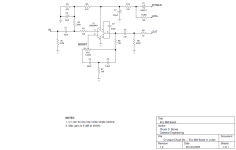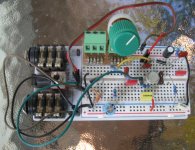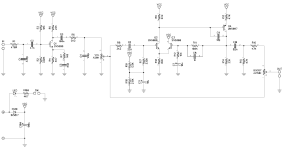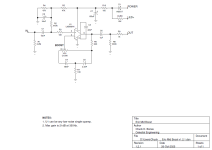Chuck D. Bones
Circuit Wizard
This is a minimalist version of the Clapton Mid Boost. Instead of discrete transistors, I used an opamp. There is only one knob: MID BOOST. The freq response is similar to the Clapton Mid Boost, with a broad focus on the mids. With the component values shown, the midrange is a little more focused than The Clapton when MID BOOST is dimed. The max gain and filter tuning are easily tweaked by adjusting C4, C5, R6 & R7. The Clapton Mid Boost is pretty stingy when it comes to current consumption, about 500μA. With the LM308H, this circuit consumes even less current, about 375μA. If you're not running this on batteries, then a TL071, LF351 or NE5534 would work well. Sounds great with single-coil pickups, fattens 'em up a bit.

The two caps on the far upper right are spares for alternate filter tuning.

Here's the freq response as the MID BOOST knob is turned.


The two caps on the far upper right are spares for alternate filter tuning.

Here's the freq response as the MID BOOST knob is turned.

Last edited:


